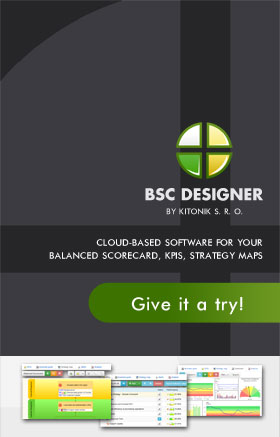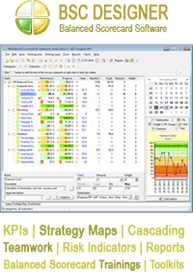KPI Models through the Balanced Scorecard Template
It is quite normal to not know what particular KPIs you should use in developing your balanced scorecard right off the bat. This is because the selection process is not as simple as it seems. If you are operating a call center, you cannot immediately assume that you can use the same set of metrics that another call center is using right this moment. This is quite true, even if call centers do belong to the same industry in the corporate world. Thus, it would be better to find some information on KPI models when developing your balanced scorecard. And the best way to do this is by checking out a balanced scorecard template.
But what is it about the balanced scorecard template that makes it an important tool for developers to use? Truly, this is quite an obvious question to answer. Think of it the way you would think of the usual template for any endeavor. For instance, you have a certain sales report to file as an agent selling insurance. Most insurance companies would actually have a certain template all agents should adhere to when they are making their sales reports. This does not promote coherence amongst the sales reports produced by the agents; this also promotes organization and the proper workflow that is needed to run the whole insurance company.
The same concept is entailed in using the balanced scorecard template. No matter the industry the organization or company belongs to, by having a specific template that guides developers in creating the balanced scorecard accordingly, the resultant scorecard itself would then be a very useful and fitting tool in the end.
The balanced scorecard template would show you a rating system that has been specially designed to assist the different management levels in determining goals, procedures, and results. The typical template would actually have corporate effort divided into three categories at the very least – these are usually Mission, Vision, and Strategy. Three viewpoints are then used to review these areas so that the reviewing process can be done more accurately. Of course, the number of viewpoints here would not be limited to just three, for it is actually the nature of the business or organization that influences this said number. If there is a need to use more viewpoints, then by all means, use all of them. At the very least, the viewpoints here would typically include stakeholders, employees, and owners.
All of these are then combined and used in determining the proper KPIs to use for the development of the scorecard. For accurate development here, there is a need to analyze the nature of the business itself. Like in the call center scenario mentioned above, would you need to include the metric assessment of state research funding on the scorecard? If you would use this as one of your KPI models, then you would be defeating the very purpose of developing a scorecard in the first place. The nature and operations of the company at hand should be considered when coming up with the different KPIs to use on your balanced scorecard. And by keeping tabs with existing balanced scorecard templates, the whole endeavor will be made a lot easier.
—
If you are interested in kpi models, check this web-site to learn more about metric models.


